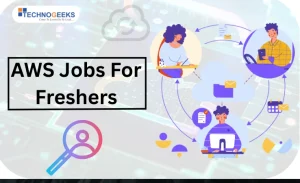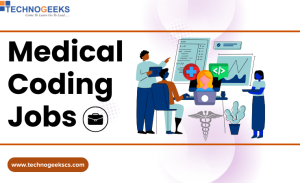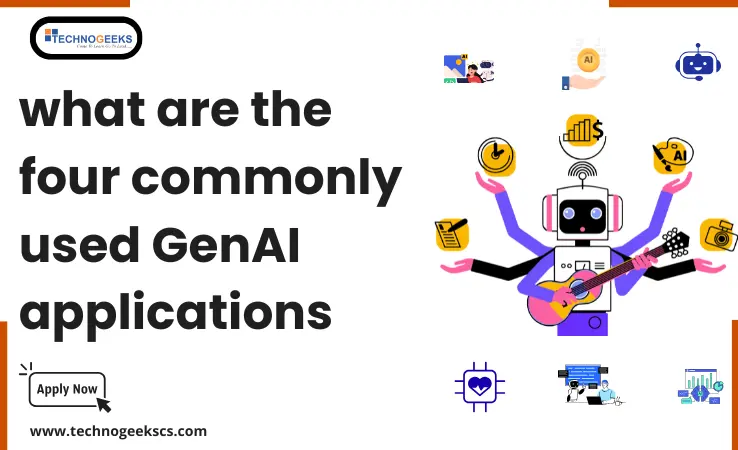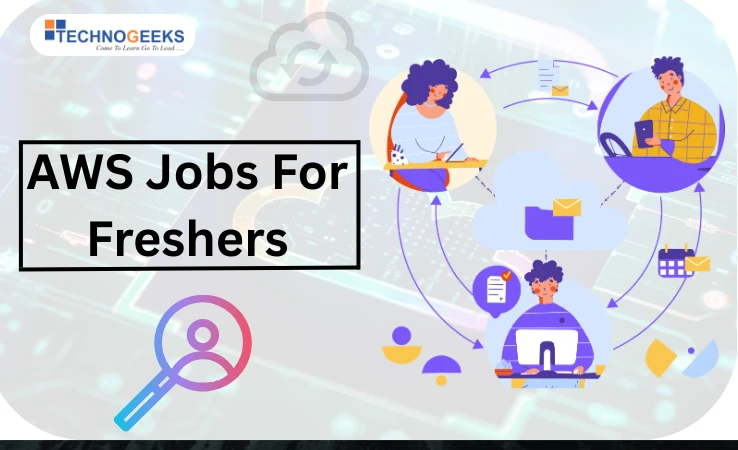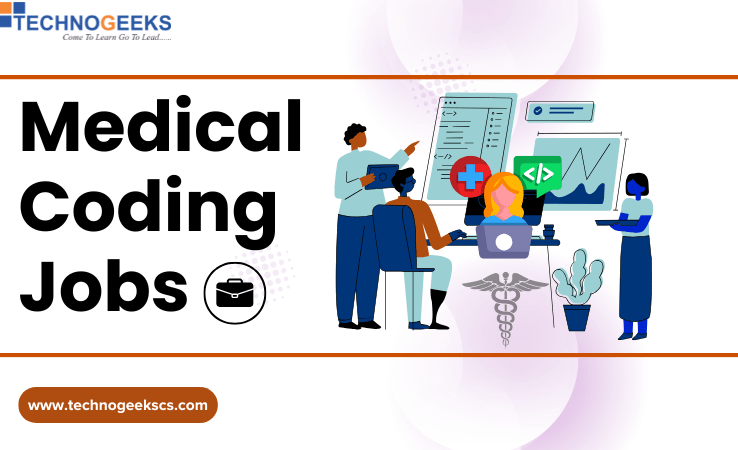If you’ve recently started thinking about starting a career in cloud computing, you must have come across Amazon Web Services (AWS), the most popular and successful cloud computing service, with over 47% of the IaaS public cloud services market.
If you’re looking for answers to questions such as, “What is AWS?” “What does it stand for?” “How to be an AWS Professional?” “What do I need to start learning AWS?”
How can I get popular AWS certifications? and so on. What are the best courses I can take to become an expert in AWS? What practical and interactive hands-on experience do I get in a classroom? This is a blog post that will serve as your guide and tell you everything you need to know about Amazon Web Services (AWS)!!!
Table of Contents
ToggleWhat Is Cloud Computing?
Before learning about AWS, we must first understand Cloud Computing.
Cloud computing refers to the on-demand availability of computer system resources without having to install and maintain them on-premises.
These remote computer systems deliver computing services over the internet, such as storage, networking, databases, software, and analytics, without active user involvement in maintaining them. These functions are distributed across multiple locations, each of which is a data centre, managed by a cloud services provider (or CSP).
Cloud Computing Service Models
The cloud computing industry identifies a number of different cloud computing service models, including Software as a Service (SaaS), Platform as a Service (PaaS), and Infrastructure as a Service (IaaS).
Infrastructure as a Service (IaaS)
IaaS (IaaS Full Form: Infrastructure as a Service) is one of the most commonly used cloud computing services.
One of the “big three” cloud service models is Infrastructure as a Service (IaaS).
It’s the most basic service model in which you can rent IT infrastructure—servers and virtual machines (VMs), storage, networks, and operating systems—from a cloud provider.
On a pay-per-use basis, the customer can rent storage, network, and computing power.
IaaS is the most flexible cloud computing model, allowing you to adjust computing resources based on demand.
IaaS enables simple deployment by quickly deploying servers, processing, storage, and networking.
It’s similar to buying electricity from an electricity provider. With IaaS, you no longer need to buy servers and other data center infrastructure or spend time and money on maintenance, setup, and configuration. For example, instead of spending $1 million on installing your own data center, you can simply rent it from a cloud provider for as little as $60 per user per month.
Platform as a Service (PaaS)
PaaS (PaaS Full Form: Platform-as-a-Service) is a cloud computing model that provides a platform and infrastructure to application developers. The computing resources are virtualized and available on demand. Once it has been developed, PaaS can quickly launch the application in the cloud. You just pay for what you use by using PaaS.
It lets you build an application quickly without having to think about developing, running, maintaining, and managing applications.
When you use PaaS to start a web application, for example, you don’t need to set up an operating system, a web server, or even perform system updates.
AWS’s Elastic Beanstalk, Lambda, Azure’s WebApps, Functions, Azure SQL DB, Cloud SQL DB, and Oracle Cloud’s Oracle Database Cloud Service are examples of PaaS.
Software as a Service (SaaS)
SaaS (SaaS Full Form: Software as a Service) is a cloud computing model that provides software applications over the Internet rather than selling them as standalone software packages. SaaS is a pricing model for software where the vendor develops application software for usage on a subscription basis.
When you use a SaaS provider, you don’t have to worry about service maintenance or the underlying infrastructure management.
Popular SaaS software services are Microsoft Office 365, Oracle ERP/HCM Cloud, SalesForce, Gmail, and Dropbox.
Cloud Computing Service Models
IaaS (IaaS Full Form: Infrastructure as a Service) is one of the most commonly used cloud computing services.
One of the “big three” cloud service models is Infrastructure as a Service (IaaS).
It’s the most basic service model in which you can rent IT infrastructure—servers and virtual machines (VMs), storage, networks, and operating systems—from a cloud provider.
On a pay-per-use basis, the customer can rent storage, network, and computing power.
IaaS is the most flexible cloud computing model, allowing you to adjust computing resources based on demand.
IaaS enables simple deployment by quickly deploying servers, processing, storage, and networking.
It’s similar to buying electricity from an electricity provider. With IaaS, you no longer need to buy servers and other data center infrastructure or spend time and money on maintenance, setup, and configuration. For example, instead of spending $1 million on installing your own data center, you can simply rent it from a cloud provider for as little as $60 per user per month.
There are four different types of clouds:
- Public Clouds
- Private Clouds
- Hybrid Clouds
- Multi Clouds
Public Clouds
Public clouds are a category of cloud computing that provides shared resources, servers, and services to the general public over the Internet. The three types of services provided by a public cloud (SaaS) are IaaS (IaaS Full Form: Infrastructure as a Service), PaaS (PaaS Full Form: Platform-as-a-Service), and SaaS (SaaS Full Form: Software as a Service).
When a company uses a public cloud, it is purchasing IT infrastructure as a service.
Amazon Web Services, Microsoft Azure, and Google Cloud Platform are three of the most popular public clouds. Consumers and businesses can rent computing power, storage, and applications on demand via the Internet from anywhere in the world.
The most obvious advantage of using the public cloud is that you can use software and services like Microsoft Office 365 or Salesforce without having to invest in or manage on-premises infrastructure. It also allows your company to respond quickly to changing business requirements, such as rapid scaling or new capabilities.
Private Clouds
Private clouds deliver on the promise of cloud computing: delivering services to users on demand. Private Clouds are created to help you to build clouds, in your own environment. It’s cost-effective, easy-to-deploy cloud computing model that offer a variety of advantages to businesses.
The demand for enhanced scalability, security, and flexibility has prompted the development of private clouds, the next generation of data center infrastructure. Private clouds can be quickly deployed over the Internet while maintaining greater control over user access, managing crucial system configurations, and leveraging existing physical equipment and processes at a lower cost.
Private Cloud has three main benefits: greater hardware utilization, rapid deployment of new services, and customized business processes that can be implemented quickly.
Hybrid Clouds
Hybrid clouds are a combination of private, public, and hosted environments. Hybrid cloud computing is a service that delivers the best of both private and public cloud features.
You get the security of a private cloud. But you also get the elasticity, flexibility, and cost savings of a public cloud.
A hybrid cloud combines both public and private clouds to give customers additional flexibility and greater control over their computing environment.
This solution allows an organization to take advantage of private cloud economies (such as a more streamlined on-premises IT infrastructure) while still providing the elasticity and agility of a public cloud. Hybrid cloud computing enables enterprises to achieve higher availability, better performance, more functionality, and higher security.
For example, an enterprise may operate its own internal infrastructure cloud (private cloud) and, at the same time, use public IaaS, PaaS, or SaaS clouds for specific services and applications. A hybrid cloud is considered a good long-term solution for enterprises wishing to enable strategic alignment between IT infrastructures and business capabilities.
Multi-Clouds
A multi-cloud is a cloud computing model in which an organization uses a combination of clouds, such as two or more public clouds, two or more private clouds, or a mix of both public and private clouds.
It can be a combination of SaaS, PaaS, & IaaS services.
IT administrators can manage a multi-cloud infrastructure using tools provided by cloud service providers. Alternatively, they can use a multi-cloud management solution to reduce complexity. There is no single best practice guideline for managing multi-cloud because each organization’s use case is unique.
Why are Multi-Clouds used by organisations?
- To reduce financial risk by avoiding reliance on a single cloud provider.
- To reduce the risk of a localized hardware failure. It also reduces the risk of big systematic failure.
- It reduces the Shadow IT issue and enables users to benefit from selected cloud technologies while complying with security standards.
What Is Amazon Web Services (AWS)?
AWS (AWS Full Form:Amazon Web Services) is a collection of remote computing services and resources that together make up a cloud computing platform. It provides all the facilities required to run applications using a technology called Platform as a Service (PaaS).
It offers pay-as-you-go rental of various high-level AWS services that can be used to build and launch applications without the cost or hassle of buying or managing the underlying infrastructure.
Amazon offers more than 200 services to fulfill the needs of a wide range of applications for computing, storage, networking, database, analytics, application services, deployment, and management from 84 Availability Zones in 26 different geographical regions around the world.
AWS is a secure and reliable hosted cloud infrastructure platform that enables you to build and deploy applications using languages like Java, Python, Ruby, PHP and .NET on a pay-as-you-go basis.
How Does AWS Work?
One of the most popular assumptions regarding cloud computing is that it can be difficult to manage. To disprove this assumption, AWS offers a user-friendly interface.
The AWS management console allows the user to view and monitor all of your services on a single dashboard.
AWS (AWS Full Form:Amazon Web Services) offers services from thousands of data centers located in a variety of availability zones (AZs) around the world. AZs is a physical area with several data centers, whereas a region is a group of AZs in close proximity connected by low-latency network connections. AWS customers can create virtual machines (VMs) and duplicate data across AZs to build a highly reliable architecture that can handle individual server or data center failures.
Imagine a cloud with hundreds of web hosting rooms or warehouses all over the world, connected by fast leased interconnecting links and operated by an in-house developed Linux system with a specified and optimized DNS system and cluster configuration based on server physical location; that’s AWS. Their instances (virtual servers) are similar to ocean droplets or VPS images on some shared hosting providers.
Essential Amazon Web Services – An Introduction
Amazon Web Services offers a broad set of global cloud-based products, including compute, storage, databases, analytics, networking, mobile, developer tools, management tools, IoT, security, and enterprise applications. These services help organizations move faster, lower IT costs, and scale.
There are almost 200 services in AWS. However, Elastic Compute Cloud (EC2), Simple Storage Service (S3), VPC, and Lambda, Route53, CloudWatch, AutoScaling, and RDS are essential These are the services that you should know about if you want to become a certified AWS Practitioner or AWS Solutions Architect by studying these services.
Elastic Compute Cloud (EC2)
EC2 (EC2 Full Form: Elastic Compute Cloud) is a web service that provides resizable computing capacity in the AWS Cloud. Using EC2 reduces the requirement for upfront hardware investment, allowing you to develop and deploy apps more quickly.
EC2 (EC2 Full Form: Elastic Compute Cloud) allows you to create as many or as few virtual servers as you need, as well as establish security and networking and manage storage.
EC2 instances can scale up or scale down as required. These instances can be released in one or more geographical locations or regions, and Availability Zones can be used to control where they are launched (AZs).
Each area is made up of a number of AZs in different places that are connected via low-latency networks within the same region.
Virtual Private Cloud (VPC)
VPC (VPC Full Form: Virtual Private Cloud) is a secure and manageable cloud between your applications and AWS services. Using VPC, you can launch AWS resources in a virtual network that you define. You have complete control over your virtual networking environment, including a selection of your own IP address range, creation of subnets, and configuration of route tables and network gateways.
There is no extra cost for using a VPC. Some VPC components, such as NAT gateways, are charged.
Lambda
Lambda is a serverless compute service that runs code in response to events and automatically manages the compute resources required by that code.
It makes it easy to build applications that use AWS services like Amazon S3, Amazon EC2, and more without managing any servers.
You can use Lambda to run code for almost any form of application or backend service.
All you have to do is write your code in one of Lambda’s supported languages.
AWS Lambda natively supports Java, Go, PowerShell, Node.js, C#, Python, and Ruby code, as well as a Runtime API that allows you to write your functions in any additional programming language.
Lambda follows a pay-as-you-go model, you just pay for the computing time you use; there are no charges if your code is not running.
Route53
Route 53 is a highly available and scalable Domain Name System (DNS) web service. Amazon Route 53 translates domain names like “www.example.com” into IP addresses like 192.0.2.1, the Internet Protocol (IP) address for servers on the Internet that run your domain’s website or email service.
Amazon Route 53 handles millions of query requests per second and can be used to route end users to infrastructure running on AWS, such as Amazon EC2 instances or Amazon S3 buckets, or to infrastructure outside of AWS.
When a traffic flow is created, it provides automated DNS routing to the appropriate web servers and IP address so that the server can receive the request.
Latency-based Routing, Geo DNS, Geo Proximity, and Weighted Round Robin—all of which can be combined with DNS Failover to provide a range of low-latency, fault-tolerant architectures—make it simple to manage traffic globally with Amazon Route 53 Traffic Flow.
Amazon Route 53 also offers Domain Name Registration, which allows you to buy and manage domain names like example.com, with Amazon Route 53 automatically configuring DNS settings for you.
AutoScaling
Auto Scaling is a web service that helps you monitor your applications and automatically adds or removes computing resources as required. AWS provides cost-effective, easy scalability for web-based applications, with no manual scaling required.
You can also use the EC2 Auto Scaling dynamic and predictive scaling features to add or remove EC2 instances. Predictive scaling automatically schedules the proper number of EC2 Instances based on predicted demand, while dynamic scaling responds to changing demand. Both dynamic and predictive scaling can be used together to scale more quickly.
Relational Database Service (RDS)
Amazon RDS (Amazon RDS Full Form: Amazon Relational Database Service) is a web service that makes it easy to set up, operate, and scale a relational database in the cloud.
Amazon RDS is a managed relational database service that includes Amazon Aurora, MySQL, MariaDB, Oracle, Microsoft SQL Server, and PostgreSQL, among other database engines.
This means you can use Amazon RDS with the same code, applications, and tools you use with your old databases.
Provisioning, patching, backup, recovery, failure detection, and repair are all tasks handled by Amazon RDS.
DynamoDB
DynamoDB is a fully managed NoSQL database service in AWS offering fast and predictable performance with seamless scalability.
You can design database tables using DynamoDB that can store and retrieve any amount of data and handle any amount of request traffic.
You can increase or decrease the throughput capacity of your tables without facing any downtime or performance reduction.
On-demand backups are supported with DynamoDB.
It enables you to create comprehensive backups of your tables for long-term storage and archive in order to meet regulatory compliance requirements.
CloudFormation (CFN)
CFN (CFN Full Form: CloudFormation) is a web service to help you create and manage collections of related AWS resources.
“Cloud-formation scripts” describe the various AWS resources that you want to create, and also specify characteristics like security credentials, monitoring configuration, and resource dependencies.
You don’t have to create and configure AWS resources one by one, or figure out what’s dependent on what; CloudFormation takes care of that.
Simple Queue Service (SQS)
SQS (SQS Full Form: Simple Queue Service) is a fully managed message queuing service for decoupling and scaling microservices, distributed systems, and serverless applications. Developers can send, store, receive, and delete messages in a queue that SQS uses to communicate among other services and applications.
Simple Notification Service (SNS)
SNS (SNS Full Form: Simple Notification Service) is a fully managed messaging service for both A2A (Application-to-Application) and A2P (Application-to-Person) communication. It lets you push notifications to mobile devices, email inboxes, short codes, or AWS Lambda functions.
Amazon SNS is easy to set up, scalable, and completely managed by AWS.
5 Reasons For AWS Success?
Amazon Web Services is one of the most successful cloud computing platforms.
But what is it about AWS that makes it so successful?
Here are five reasons why AWS cloud platforms and services have been so successful.
Cost Effective:
If you use traditional methods, you’ll have to create your own servers to store your data and apps, which will take a lot of time and money.
AWS has a pay-as-you-go pricing model, which means that a company only pays for the services it needs and utilizes for a specific period of time. It’s similar to paying your power bill in that you only pay for the units you’ve consumed.
Easy to use
When you sign up for Amazon Web Services, you’ll be faced with the AWS Management Console, which has a very user-friendly interface.
This server interface gives you access to various AWS services.
This management console is based on a browser GUI and is ideal for AWS.
The Console makes it simple to discover new services, configure them, and view their usage, among other things.
AWS provides well-documented web services APIs that you may use to access the platform, making it reasonably simple to use.
Security
One of the reasons governments, as well as big corporations, use AWS is its highly secure architecture and data privacy.
As we all know, security is a top priority for any data-centric company. AWS delivers on that.
AWS offers a more reliable security solution that ensures the safety and security of your data.
AWS follows different layers of security, such as:
- Data protection
- Identity and access management
- Infrastructure protection
- Threat detection and continuous monitoring
- Compliance and data privacy
Flexibility
The flexibility of AWS is one of its main advantages. There’s no limit to how much you can use because it’s infrastructure-on-demand. AWS gives you a variety of choices.
You can choose your preferred operating systems (OS), web application platforms, programming languages, and so on.
In a virtual ecosystem, the platform makes it simple to load any service or software you want.
Scalable & High Performance
Your application may scale up or down based on demand using AWS features, Auto Scaling, and Elastic Load Balancing. You have access to computation and storage resources when you need them.
What Is The Use Of AWS?
The Amazon Web Services (AWS) suite of cloud computing services offers a large-scale, feature-rich platform in the cloud. It provides scalable, reliable, and inexpensive infrastructure services at very low prices.
At the same time, AWS offers rapid access to “virtualized” computing power that allows customers to scale up or down their computing resources quickly and easily as needed.
1. Backup And Storage
AWS Backup is a fully managed service that allows users to easily centralise and automate data protection across AWS services, in the cloud and on-premises.
Amazon S3 is a cloud object storage service that offers the best in industry scalability, data availability, security, and performance for your data storage options.
AWS can be used to store sensitive information. It provides a variety of storage options, letting organizations make their own decisions based on their requirements. It can be used for file indexing and storing, long-term archiving, high-performance writing and reading, and the running of critical business applications.
2. Enterprise IT
On occasion, enterprise IT may run in a slow manner. Server installation, time-consuming procurement, and other factors all contribute to slow operational performance. Amazon’s cloud services are an excellent option for these problems.
Businesses may use AWS to create, test, and run secondary operations in the cloud, allowing them to deploy projects much more quickly. The speed with which a project is completed is a significant factor in gaining a competitive advantage. AWS’s flexibility allows enterprises smoother and quicker deployment.
3. Applications For Mobile, Web, And Social Media
The vast and efficient AWS infrastructure makes it easier to create and scale applications, particularly mobile apps, e-commerce apps, and SaaS apps.
New apps are now being developed on server-less platforms, performing this function without the need for an operating system or other systems (its most famous example is Google’s Chrome OS).
AWS allows API-driven programming to be used to develop uncompromisingly scalable applications.
4. Websites
Organizations can host their websites on the AWS cloud, just like any other web application. CDNs, DNS, and domains can all be hosted here.
5. Gaming
Gaming applications use a significant amount of the internet and computing resources. To make the best online gaming experience possible for gamers all over the world, AWS is used by top gaming vendors on the global gaming network.
What Is Amazon Web Services Certification?
AWS certification is a public demonstration authorised by AWS itself of cloud expertise obtained by an IT professional after clearing one or more of the public cloud provider’s exams.
AWS certifications allow IT professionals to demonstrate and certify their technical cloud knowledge and skills. For cloud engineers, administrators, and architects, AWS offers a variety of certification exams.
AWS certification is valid for two years, after which IT professionals can recertify their specialized qualifications. There are hundreds of testing centers all over the world where the exams can be taken.
AWS certifications come in a variety of forms. AWS offers six separate certificates, which are divided into four main paths (Cloud Practitioner, Architect, Developer, and Operations) and subpaths.
- Cloud Practitioner Path
- Architect Path
- AWS Certified Solutions Architect — Associate
- AWS Certified Solutions Architect — Professional
- Developer Path
- AWS Certified Developer — Associate
- AWS Certified DevOps Engineer — Professional
- Operations Path
- AWS Certified SysOps Administrator — Associate
- AWS Certified DevOps Engineer — Professional
- Specialty Path
- AWS Certified Big Data — Specialty
- AWS Certified Advanced Networking — Specialty
- AWS Certified Security — Specialty
- AWS Certified Machine Learning — Specialty
- AWS Certified Alexa Skill Building — Specialty
Certifications Cost
Associate-level exam registration costs $150; Professional- and Specialty-level exam registrations each cost $300.
One AWS certification exam is included with each registration cost.
Popular AWS Certifications
| Certifications | Skills Required | Cost | Duration |
| AWS Certified Cloud Practitioner (CLF-C01) | ➤ Basic knowledge of IT services and how they are used on the AWS Cloud platform ➤ Basic understanding of AWS services and use cases, billing and pricing models, security concepts, and how the cloud impacts your organization | $100 | 90 minutes |
| AWS Certified Solutions Architect – Associate (SAA-C02) | ➤ One year of hands-on experience with AWS ➤ Expertise in deploying, managing, and maintaining workloads on (AWS), as well as implementing security controls and compliance requirements ➤ Familiar with using both the AWS Management Console and the AWS CLI ➤ Knowledge of the AWS Well-Architected Framework, AWS networking, security services, and the AWS global infrastructure. | $150 | 130 minutes |
| AWS Certified Solutions Architect – Professional (SAP-C01) | ➤ The AWS CLI, AWS APIs, AWS CloudFormation templates, the AWS Billing Console, the AWS Management Console, a scripting language, Windows and Linux environments, and a scripting language are all things you should know. ➤ Able to evaluate cloud application requirements and give architectural recommendations for AWS application implementation, deployment, and provisioning ➤ Designing a hybrid architecture using key AWS technologies (e.g., VPN, AWS Direct Connect) | $300 | 180 minutes |
| AWS Certified Developer – Associate (DVA-C01) | ➤ Knowledge of at least one high-level programming language ➤ Understanding of core AWS services ➤ Expertise in writing code for serverless apps and developing, deploying, and debugging cloud-based services utilizing AWS. | $150 | 130 minutes |
| AWS Certified SysOps Administrator – Associate (SOA-C02) | ➤ One year of hands-on experience with AWS ➤ Familiar with using both the AWS Management Console and the AWS CLI ➤ Knowledge in AWS Well-Architected Framework as well as AWS networking and security services | $150 | 180 minutes |
| AWS Certified DevOps – Professional (DOP-C01) | ➤ Knowledge of at least one high-level programming language ➤ Modern development and operational procedures and techniques are well-understood. Capability to implement and manage AWS-based continuous delivery systems and methodologies Capability to define and deploy monitoring, metrics, and logging systems on AWS | $300 | 180 minutes |
| AWS Certified Security – Specialty (SCS-C01) | ➤ 5 years of IT security experience in designing and implementing security solutions and at least 2 years of hands-on experience in securing AWS workloads. ➤ Understanding of the AWS shared responsibility model and how to use it | $300 | 170 minutes |
| AWS Certified Machine Learning – Specialty (MLS-C01) | ➤ At least two years of hands-on experience in AWS developing, architecting, and running ML or deep learning workloads. ➤ Understanding of basic ML algorithms ➤ Knowledge of machine learning and deep learning frameworks. ➤ Model training, deployment, and operational best practices are all skills that may be learned. | $300 | 180 minutes |
Which AWS certification is best?
Which AWS certification is best for beginners ?
The AWS Certified Cloud Practitioner (CCP) is Amazon Web Services’s foundational certification. It’s a cloud certification for beginners that covers the fundamentals of AWS and the cloud.
AWS’s recommendations before taking this exam are:
- Six months of exposure to the AWS Cloud
- A basic understanding of IT services and their uses in the AWS Cloud platform
- Knowledge of core AWS services, etc.
Which AWS certification is best for beginners ?
AWS Certified cloud practitioner is a certification offered by AWS. It is meant for individuals who have experience in working with AWS and want to show their expertise.
The certification helps to validate the skills and knowledge of individuals seeking to become an AWS Certified cloud practitioner. This certification is intended to help people get a job as a cloud professional.
An AWS certificate may not be enough to land you a job on its own, but IT businesses like credentials, and gaining AWS skills can help you advance in your career.
The certification is not meant for beginners, but it does help professionals who are looking to get a new job or find a company that needs their skillset.
With the increasing number of cloud-based services, it is important for IT professionals to earn the AWS Certified Cloud Practitioner certification.
The exam is designed to test your knowledge and skills in designing and deploying solutions for the Amazon Web Services platform.
Does AWS Require Coding?
Many simple tasks can be performed without coding.
Therefore, getting started with and using AWS does not require any coding knowledge. You may still be required to master certain programming skills, depending on the job/skills and abilities you have (or need).
In some cases, interacting with AWS does not require code. AWS is primarily accessed in one of two ways: manually via the AWS UI, or programmatically via infrastructure as code tool, which involves writing cloud configuration instructions in text files.
AWS Cloud Computing Roles And Responsibilities
Many simple tasks can be performed without coding.
Therefore, getting started with and using AWS does not require any coding knowledge. You may still be required to master certain programming skills, depending on the job/skills and abilities you have (or need).
In some cases, interacting with AWS does not require code. AWS is primarily accessed in one of two ways: manually via the AWS UI, or programmatically via infrastructure as code tool, which involves writing cloud configuration instructions in text files.
AWS Cloud Engineer
AWS Cloud Engineer is a cloud specialist with a broad skill set in the AWS ecosystem. They have deep knowledge of the AWS platform and are responsible for building, configuring, and maintaining AWS infrastructure.
AWS Cloud Engineer Roles and Responsibilities:-
- Developing solutions to meet business needs.
- Deploying and maintaining the AWS infrastructure.
- Manage a server-based technology’s continuous integration and deployment technique.
- Act as a technical resource for the team by providing guidance on how to use the products.
- Provide best practices and troubleshooting tips for issues.
- Assist with deployments and production support
AWS Cloud Developer
In projects, the responsibility of the AWS Developer is to design and integrate AWS based computer systems and data. The tasks differ depending on the priorities of the company.
AWS Developer Roles and Responsibilities
- Analyzing the current application infrastructure and making recommendations for improvements.
- Defining and documenting best practices and methods for app deployment and infrastructure maintenance.
- Using CloudFormation or something similar to write infrastructure as code.
- Helping the client with the migration to AWS
- Implementing cost-effective migration strategies
- Migrating infrastructure with minimal downtime.
- Setting up a monitoring stack.
AWS Solution Architect
AWS Cloud Engineer is a cloud specialist with a broad skill set in the AWS ecosystem. They have deep knowledge of the AWS platform and are responsible for building, configuring, and maintaining Amazon Web Services (AWS) infrastructure. They work closely with engineers, developers, and other business stakeholders to ensure that they meet their goals.
A solution architect may also be responsible for software systems and devices, programming, testing, and integration. They use methods that usually involve choosing the right technology for a problem.
AWS Solution Architect Roles and Responsibilities
- Providing technical expertise in designing and implementing cloud-based applications.
- Developing an architectural vision for a client’s application.
- Working with clients to identify business needs.
- Determining what technologies best meet those needs.
- Future scalability and maintenance.
AWS DevOps Engineer
The role of an AWS DevOps engineer is to automate the deployment, management, and monitoring of applications in the cloud. They are responsible for delivering high-quality software that is scalable, secure, and reliable.
The most important qualities for this job are coding in at least one high-level programming language, knowledge of the most commonly used DevOps tools, understanding of AWS services related to DevOps, and automation experience to support continuous delivery and continuous integration processes.
AWS DevOps Engineer Roles and Responsibilities
- Creating automation scripts to deploy and monitor applications on AWS
- Integrating with other services such as Kubernetes to manage containers
- Managing server configurations and scaling them as needed
- Monitoring application performance
- Going to ensure AWS production systems’ availability, performance, security, and scalability.
DevSecOps Associate / Engineer
DevSecOps Stands For Dev(Development),Sec(Security),Ops(Operations).
DevSecOps is a relatively new term that has gained popularity in the last few years. The purpose of DevSecOps is to provide more secure software and services by combining the best practices of both operations engineering and security engineering.
The ability to use DevOps tools, knowledge of AWS Security, in-depth understanding of AWS services, substantial expertise with Terraform/CloudFormation, experience in developing CI/CD pipelines, and Linux programming experience are the most important skills for this job.
AWS DevSecOps Engineer Roles and Responsibilities
- Compliance: The DevSecOps team ensures that all security requirements are met, including those required by law or industry standards.
- Security: The DevSecOps team manages security controls in accordance with company policies and standards. They also work with other teams to ensure that security is integrated into their software development lifecycle (SDLC).
- Risk: The DevSecOps team analyzes risk in order to identify ways
- Process monitoring
Why is AWS better than Azure?
One of the most frequently asked questions in recent times is whether to deploy your cloud computing solution on AWS or Microsoft Azure. Both of these platforms are widely used for hosting applications, and both have their own set of advantages. Considering this, we will look at the major differences between AWS and Microsoft Azure and try to find out who serves better in terms of speedy content delivery, cost, services, privacy and security, etc.
Choosing the right cloud platform can be a complex decision. Price, features, and support will all be factors that go into your decision. However, AWS is often considered the better platform for application development due to its flexibility and scalability.
| Criteria | AWS | Azure |
| Free Trial | AWS Free Tier for 12 months with a usage cap. | 25+ free services for 12 months and $200 in credit. |
| Data Archiving | Archive storage solutions are available from AWS for long-term retention, compliance, and digital preservation. | Azure Archive Storage offers low-cost, high-availability, secure cloud storage and data management for data archiving. |
| Hybrid Cloud | Support for the Hybrid Cloud | Better Support for Hybrid Cloud than AWS |
| Big Data | EBS storage is used for storage. | Need premium storage |
| Type Of Connection | Direct Connection | Express Route |
Why is AWS better than Azure?
Cloud computing has become the standard for all software companies. The increase in demand for professionals who can design, manage, and deploy cloud applications has correlated with the growth of cloud computing.
Because of its performance and reliability, AWS has essentially established the gold standard for cloud computing.
AWS is responsible for 41.5 % of all application workloads on public clouds.
As a result, businesses want candidates with AWS skills to manage their cloud services, resulting in an increase in AWS employment demand.
How to learn AWS?
The best way of learning AWS is by doing hands-on practicals. But it may take a lot of time. Based on your natural way of learning, you can either enroll in a self-paced MOOC course from
Coursera, Udemy, or any other platform.
Follow along with the course modules, solve assignments, and do all the projects that will help in deepening the knowledge you have just learned.
OR
If you are the type of person who needs a mentor to guide you, push you in the right direction, and help you when you are not able to complete the course, lead you step-by-step through each new topic, and leave the advanced topics (and sometimes even basic ones!)
Then “live interactive classroom training” is suited for you!
(And if you’re interested in attending a free trial of recorded live sessions that give an overview of all of Amazon Web Services, then you can contact us on 8600995107 or 7028710777.)






